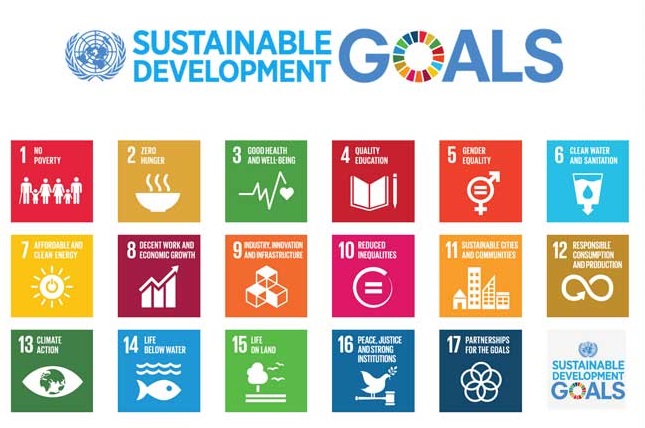Pick Up
1. JIRCAS @ 50th Anniversary: Continuous Commitment to SDGs and Agricultural Research

In recent years, abnormal weather and extreme climate events such as heavy rain, floods, droughts and bush fires are occurring frequently all over the world and have become daily items in the news. Even in Japan, strong typhoons, heat waves and warm winters are now commonplace, and it is becoming apparent that problems that may be caused by global climate change are seriously affecting our daily life and economy.
Climate change affects the agriculture, forestry and fisheries industry with a great impact in Japan as well as in many developing regions.Whereas the Japan's agriculture, forestry and fisheries sector faces a declining birthrate and aging population, in developing regions the challenge is to provide food to an ever-growing population while addressing the uncertainty of climate change. According to the United Nations, the global population of 7.7 billion in 2019 will reach nearly 10 billion by 2050, and the population of Sub-Saharan Africa will double (United Nations 2019). The proportion of the world's urban population is estimated to reach 68% from the current 55%, and it is estimated that nearly 90% of the increase of 2.5 billion people will occur in Asia and Sub-Saharan Africa (United Nations 2018). It is expected that the demand for agriculture, forestry and fisheries products will increase in quantity and quality due to urbanization and income growth, with the accompanying westernization of dietary habits.
On the other hand, even in the developing regions, the impact of climate change on agriculture, forestry and fisheries varies depending on locally specific contexts of each country and region that span tropical, subtropical and temperate arid regions. Furthermore, the rapid economic development of emerging countries has widened the gap in developing regions, and the needs for agricultural, forestry and fisheries development are becoming more complex and diversified. On one hand, there are countries and regions that are not blessed with water resources and soil, are still in poverty and suffering from malnutrition, and have high needs for increased food production and diversification. On the other, there are those which have already been already incorporated into the global food value chain and advanced processing technologies are within reach. In either case, the agriculture, forestry and fisheries industries are also expected to play a role in job creation and promotion of industrialization.
Japan, which derives more than 60% of food supply on a calorie basis from imports on which, in turn, poor developing countries also depend, has been obliged to contribute to ensuring food security at a global level through technical cooperation. Conventional high-input/high-output agricultural technologies of the 20th century that enabled increased food production in developed and some developing countries during the 20th century required a large amount of water resources and chemical fertilizers with adverse side effects on the environment including biodiversity (Springmann et al. 2018). Obviously, the food systems in the 21st century face the major challenge of achieving food security in both quality and quantity within the Planetary Boundaries while responding to extreme weather conditions due to climate change (Tamburino et al. 2020).
The Sustainable Development Goals (SDGs) adopted by the United Nations in September 2015 is now widely recognized not only by the global community but also within Japan. Many activities are being carried out toward 17 goals and 169 targets that the world should achieve by 2030 (World Bank 2018). There is growing awareness that in order to achieve sustainable development while avoiding irreversible risks such as climate change and environmental degradation, it is necessary to transform the agriculture, forestry and fisheries system that maximizes productivity and resource utilization efficiency (Sachs et al. 2019). At the same time, it is necessary to establish a new research system for agriculture, forestry and fisheries by utilizing the latest digital tools such as smart agriculture while identifying the diverse and ever-changing needs of each country and region.
Since the establishment as the Tropical Agricultural Research Center (TARC) in 1970, JIRCAS has been active for half a century as a front-runner in Japan's international collaborative research in agriculture, forestry and fisheries in the developing regions. JIRCAS has a history of covering all fields of agriculture, forestry and fisheries, conducting collaborative research globally through interdisciplinary cooperation, and directly contributing to solving the problems of joint research partners such as developing countries. On the other hand, today's global issues and changes in the international environment are fast and complex. JIRCAS aims to contribute to the achievement of the SDGs through international joint research and information gathering and provision in the field of agriculture, forestry and fisheries, while taking advantage of its strengths based on its 50-year history and looking at global issues that will continue to grow in importance.
References
JIRCAS HP. SDGs https://www.jircas.go.jp/ja/about/sdgs
United Nations (2019). World Population Prospects 2019
United Nations (2018). 2018 Revision of World Urbanization Prospects.
World Bank (2018) Atlas of Sustainable Development Goals 2018: From World Development Indicators

